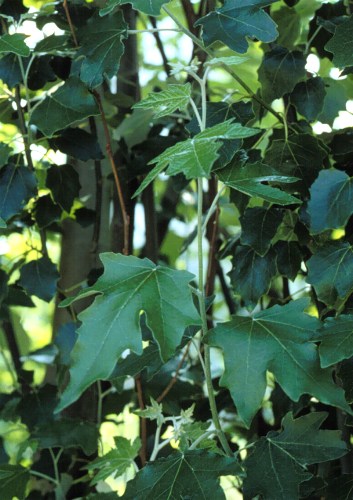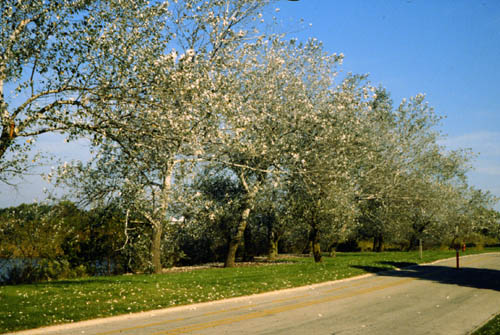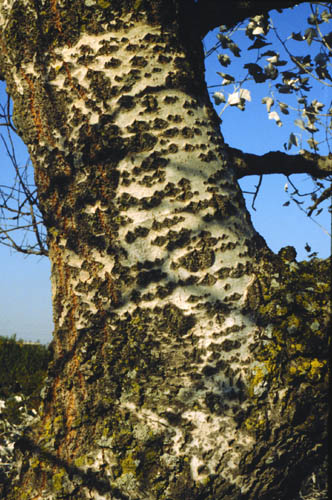Populus alba
White Poplar, Silver-leaved Poplar
Salicaceae
ExpandHabitat
- native to central and southern Europe to western Siberia
- hardy to zone 3
- Special Note: This species has demonstrated an invasive tendency in Connecticut, meaning it may escape from cultivation and naturalize in minimally managed areas. For more information, .
Habit and Form
- a deciduous tree
- widespreading
- 60' to 100' tall
- 40' to 60' wide
- oval, open irregular crown
- coarse texture
- rapid growth rate
Summer Foliage
- alternate leaf arrangement
- simple, deciduous leaves
- lobed leaves with undulate leaf margins
- 2" to 5" long
- pubescent, white underside
- tomentose petiole
- coarsely toothed
- dark green leaf color
Autumn Foliage
- yellow fall color
Flowers
- flowers before leafs out
- catkins
- not ornamentally important
- yellow
Fruit
- elongated capsule
- 0.2" to 0.3" long
- dry, brown
- litter
- two-valved
Bark
- showy, white bark
- smooth
- older bark becomes ridged and furrowed
- gray stems
- marked with dark splotches
Culture
- grows best in full sun
- salt and drought tolerant
- suckers
- prune in summer
- air pollution tolerant
- prefers moist, deep, loam
- pH adaptable
Landscape Use
- large shade tree
- park tree
- good urban tree
- for decoration from showy bark
Liabilities
- crown gall
- trunk cankers
- brittle wood
- roots can cause problems with drainage, sidewalks, etc.
ID Features
- small, imbricate buds appressed
- light chestnut brown buds, tomentose
- showy, white bark
- pubescent and white leaf undersides
- coarsely toothed leaf margins
- catkins
Propagation
- by cuttings
- by seed
Cultivars/Varieties
'Globosa' - Forming a large rounded multi-stemmed shrub, this dwarf cultivar bears young leaves that are pinkish with a gray pubescence underneath.
'Pyramidalis' - Called "Bolleana Poplar", this is perhaps the most popular cultivar. It grows as a harshly fastigiate form with vertical branching. It can reach 60' tall and only 10' wide. It is prone to many diseases and is not a viable landscape choice.
'Richardii' - A slow-growing tree or cut-back shrub, this plant is notable for its yellow leaves.


